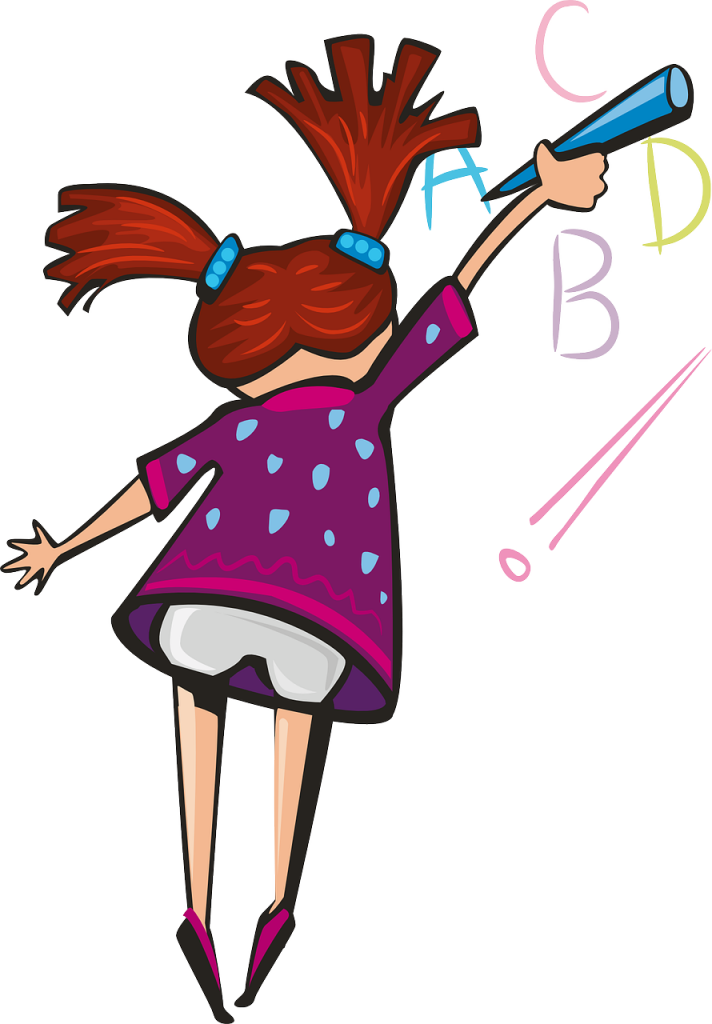
Feeling pressured to teach your child how to write?
Before you dive in, lets first check out the development of writing. Our kids are being expected to write at a younger age now and they may not be developmentally ready for it. It is important that your child’s eyes and hands are ready to support the complex skill of writing, so start off slow and build up to writing letters. No matter if your child is typically developing or has a disability the steps to writing are the same.
*Take a look at my visual development and grasping pattern development posts to see if your child has the basic physical pre-requisites for writing. Once you have determined they have these skills or are close to mastering them, introduce them to freewriting. Post on visual development (grasping pattern post to come)
Freewriting
Before you have them begin copying letters, provide them with opportunities to “pretend” to write a.k.a. free writing. Have some paper and writing tools available during free play, riding in the car, or waiting for the doctor. During pretend play, have them “take your order”, “make a grocery list”, “add up your money to pay for an item” or just doodle. It doesn’t matter at this point what they are drawing or how good it is. The key during this stage is that they are focusing on what happens when they manipulate their writing tool.
Neuroscience research has discovered that there is a specific area of the brain that must be activated in young children in order to become a good reader. In studies, seeing letters, typing letters, pressing letters on tablet and tracing letters did not activate this region in four year old children. Free-writing letters (no lines, blank paper, no dotted letters) did activate this region. The theory behind this is that as a child produces a letter, they do so differently each time. Because the brain actively recognizes patterns, the child begins to notice which parts of the letter are important and which parts are not. Activating visual discrimination helps connect that the shape isn’t like other shapes. (Jacobs, Dr. Jenni)
While they are in the free writing stage, work on basic visual discrimination. This about pointing out things to your child that you may think are obvious. Play matching games or board games. During reading time with your child point out different objects that you see and describe them in detail. Ex. I see a girl walking her dog. She has yellow hair and blue eyes. She has red shoes and flowers on her dress. What color are her flowers? Is her dog a big dog or a little dog? I see white spots on her dog. Etc. Point out all the similarities or differences you see. Essentially, you should feel like you are being captain obvious. Working on visual discrimination will help build this visual perceptual skill needed in order to write letters- you need to be able to tell A is and A and B is a B before you write it.
Pre-writing Strokes

The next step is to introduce pre-writing strokes. Each letter can be broken down into a combination of basic pre-writing strokes. When your child has mastered pre-writing strokes they will be able to form almost any letter. The pre-writing strokes are comprised of vertical and horizontal lines, circles, crosses, squares, X’s and triangles. How your child forms the strokes and what direction they move in is just as important as the stroke itself. This is due to muscle memory. Once their movement pattern has been automated to their muscle memory it is more difficult to relearn or retrain in the correct manner. So make it easier on yourself and your child and follow these steps and directions provided in the pre-writing stroke handout.
Writing letters and numbers
Now that your child has mastered their pre-writing strokes they are ready to tackle writing numbers and letters. Teachers and therapists typically group similar letters together when teaching writing and separate them into stages. Below are suggestions on how you can break letters and numbers into sections. Check out this post on what to say when teaching letters.
- Uppercase
- Block letters: I, L, E, F, H, T
- Round letters: O, C, Q, D, B, G, P, R, S, U
- Diagonal letters: A, J, K, M, N, R, V, W, X, Y and Z
- Lowercase
- Round letters: a, c, e, o, r, s, u
- Tall letters: b, d, f, h, k, l, t
- Diver letters: g, y, p, j, q
- Short letters: i, m, n, v, w, x, y and z
- Numbers
- First group: 0, 1, 3, 4, 6, 7
- Second group: 2, 5, 8, 9
Click here to go to my post with step by step instructions on what to say and how to form the letter when teaching your child
Handwriting without Tears is a great writing curriculum most therapists use when teaching children to write. Their website has a variety of products, workbooks, and screens or tests available for purchase as well as some free resources.
References
Jacobs, Dr. Jenni. The Learning Professor. To Trace or Not to Trace. February 12, 2020. https://learningprofessor.com/to-trace-or-not-to-trace/;https://skillsforaction.com/handwriting/tracing-bad-idea